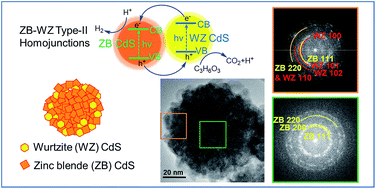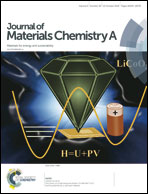PVP-capped CdS nanopopcorns with type-II homojunctions for highly efficient visible-light-driven organic pollutant degradation and hydrogen evolution†
Abstract
In this work, polyvinyl pyrrolidone (PVP)-capped cadmium sulfide (denoted as PVP-capped CdS) nanopopcorns with tunable sizes and structures are prepared at different dose rates via one-step gamma-ray radiation-induced reduction. By means of modulating the dose rates in the synthetic process, we could control contents of hexagonal wurtzite (WZ) and cubic zinc blende (ZB) phases and the associated phase junction's distribution, aiming to achieve a type-II homojunction with a proper band alignment and effective separation of photoexcited electron–hole pairs. Under visible-light illumination, the PVP-capped CdS nanopopcorns with a size of ∼90 nm prepared at an optimal dose rate of 60 Gy min−1 show the best photoactivity (0.212 min−1) toward the degradation of rhodamine B in water as well as a H2 production rate of 3.52 mmol h−1 g−1 with cyclability. On the basis of the current results, the underlying crystal-growth and photocatalytic mechanisms are proposed. The one-step gamma-ray radiation-induced reduction approach is potentially applicable in the design and synthesis of a range of functional homojunction nanostructures for solar fuel production and environmental remediation.



 Please wait while we load your content...
Please wait while we load your content...